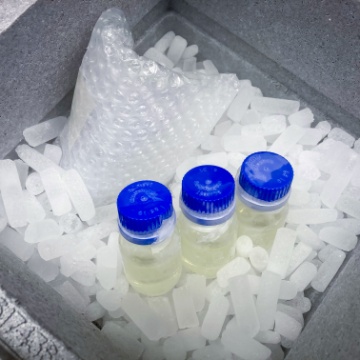Proper handling and storage of vaccines are extremely critical factors when it comes to preventing and eradicating vaccine-preventable diseases. Each year, handling and storage-related inadequacies result in huge financial losses because of wasted vaccines. Improper storage and handling of vaccines also reduce the potency of vaccines, leading to inadequate immune responses and poor disease protection for patients. In many such instances, patients may require revaccination after receiving compromised vaccines. The only way to address this problem is to manage the vaccine cold chain in the best possible manner.
What is the Vaccine Cold Chain?
In general, all vaccines are extremely sensitive to temperature fluctuations and tend to get spoilt in no time if the right storage temperature is not available. When overheated, there may be growth of pathogens in a vaccine. On the other hand, vaccines that are too cold may offer reduced efficacy.
As a rule of thumb, the temperature range of +2 °C and +8 °C is suitable for the storage of most vaccines. However, the recommended temperature for the storage of Zoster, Varicella, and MMRV vaccines is between -15 °C and -50 °C. For the Ebola vaccine, the storage temperature needs to be even lower, between -60 °C and -80 °C.
The vaccine cold chain includes all processes throughout the vaccine’s life cycle that are essential for maintaining the vaccine at the recommended temperatures. This covers everything from the cold storage of the manufacturer, the transport and distribution processes, and the vaccine’s administration.
As the optimal holding temperature of the vaccines must be maintained, they are transported in specially designed vaccine carriers, cold boxes, or refrigerated trucks. Close monitoring of temperature is also essential. This is why in addition to minimum/maximum thermometers, temperature monitoring devices are also used for real-time temperature monitoring during storage as well as transportation. Equipped with wireless temperature sensors, these devices allow 24/7 temperature monitoring and send immediate alarms in case of any temperature deviations.
Benefits of Vaccine Cold Chain
Proper management of the cold chain is a non-negotiable requirement for all types of vaccines. Some of its most important benefits are summarized here.
- Cold Chain management helps create and maintain the specific temperature range required to preserve the efficacy of the vaccines.
- According to the World Health Organization, up to 50% of vaccines manufactured per year around the world are wasted. A large majority of this wastage is the result of failure to maintain the correct temperature and can be addressed by managing the cold chain efficiently.
- An efficient cold chain allows vaccines to achieve their peak performance, thereby protecting us from many different diseases. This can be a huge positive factor, particularly in areas that are disease-prone or at the time of a pandemic.
- The use of compromised vaccines can pose serious health risks. Recipients receiving such vaccines may experience a false sense of immunity, and there may be a widespread outbreak of a preventable disease. Strict adherence to an effective vaccine cold chain not only preserves the efficacy of vaccines but also safeguards public health.
- It is important to make consumers believe that vaccines are capable of protecting them. Implementation of a transparent cold chain is one way to build this trust.
At ShockWatch, we have several industry-leading temperature monitoring devices that have been used successfully in managing vaccine cold chains. Please contact our experts today to find out more.
.


